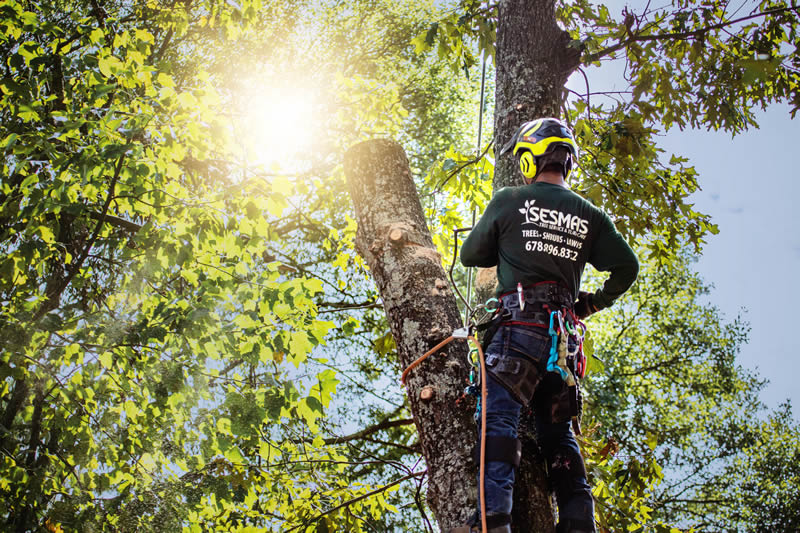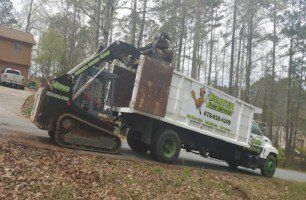Comprehending the Relevance of Tree Preservation and Conservation Practices in Urban Locations
In the dynamic landscape of city settings, trees commonly stand as silent guardians, supplying a wide range of benefits that prolong far beyond their aesthetic charm. As we explore the intertwined fabric of ecological, social, and financial benefits that urban trees offer, it comes to be obvious that their preservation is critical for the well-being of future and existing generations.
Ecological Benefits of Trees in Cities
Trees in metropolitan locations play a crucial role in offering numerous ecological benefits, contributing to the general health of city occupants. This procedure helps minimize the concentration of hazardous gases, making the air cleaner and much healthier for locals.

Moreover, trees add to water administration by reducing stormwater runoff and dirt disintegration. Generally, the environmental advantages of trees in cities are necessary for creating sustainable and livable urban environments.
Social Relevance of Urban Tree Conservation
In contemporary metropolitan landscapes, the conservation of trees holds substantial social relevance for promoting neighborhood well-being and enhancing quality of life. Urban tree preservation plays a vital function in creating spaces for social interaction and neighborhood interaction.

Economic Value of Tree Conservation
The preservation and preservation of urban trees provide considerable financial benefits that contribute to the general economic health of cities and neighborhoods. Urban trees supply a vast range of economic benefits that positively affect local economic climates.
In addition, trees play an essential function in reducing stormwater runoff and reducing the effects of flooding, which can cause expense savings for cities in terms of infrastructure repair and maintenance. Urban trees also contribute to boosted air top quality by launching and taking in pollutants oxygen, bring about potential cost savings in medical care costs connected with respiratory system ailments. By investing and recognizing in the economic value of tree conservation, cities can advertise sustainable growth, enhance high quality of life, and produce more durable city environments.
Strategies for Lasting Urban Tree Administration
A comprehensive technique to sustainable metropolitan tree management includes integrating varied methods that focus on long-term ecological health and wellness and area wellness. Executing tree inventories and assessments is essential to Clicking Here recognize metropolitan tree populations, their health, and upkeep demands.
Neighborhood engagement plays a pivotal duty in sustainable urban tree monitoring. Enlightening homeowners regarding the benefits of trees, organizing tree planting events, and involving volunteers in tree care activities fosters a sense of ownership and stewardship. Partnership between local government, ecological companies, and citizens is essential to developing and applying efficient tree monitoring plans.
Purchasing environment-friendly facilities, such as environment-friendly roofings and city woodlands, can offer numerous benefits, consisting of enhanced air top quality, stormwater administration, and city heat island mitigation. RC Property Services Guilford CT. Integrating trees into urban planning and style procedures guarantees that trees are valued as important parts of a healthy and balanced and durable urban setting
Area Participation in Tree Preservation
Area participation is an essential element in cultivating lasting urban tree monitoring practices and making sure the lasting wellness and preservation of urban tree populations. Engaging the area in tree conservation initiatives can cause boosted recognition, admiration, and stewardship of trees within urban areas. When residents proactively participate in tree planting, upkeep, and preservation initiatives, they create a sense of ownership and pride in their local setting.
Neighborhood involvement likewise promotes social cohesion and cooperation amongst locals, neighborhood authorities, and environmental organizations, cultivating a common responsibility for metropolitan tree preservation. By arranging tree planting occasions, instructional workshops, and volunteer chances, communities can function with each other to boost the city tree cover and develop greener, healthier cities.
Verdict
In final thought, metropolitan tree conservation and preservation methods play a crucial function in enhancing the ecological, social, and economic wellness of cities. By recognizing the worth of trees in city areas and executing lasting administration approaches, communities can take pleasure in the many advantages that trees give. It is critical for stakeholders to proactively take part in tree conservation efforts to ensure a greener and site web much healthier urban environment for present and future generations.
